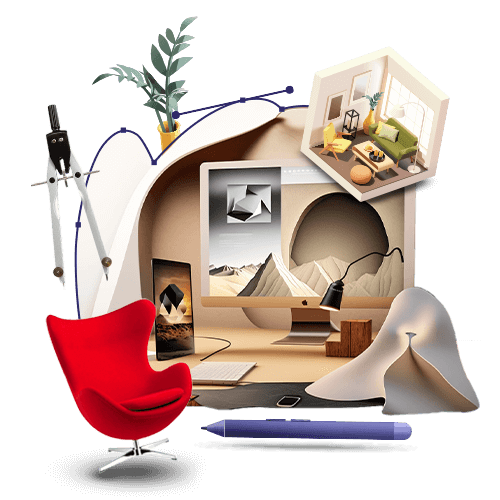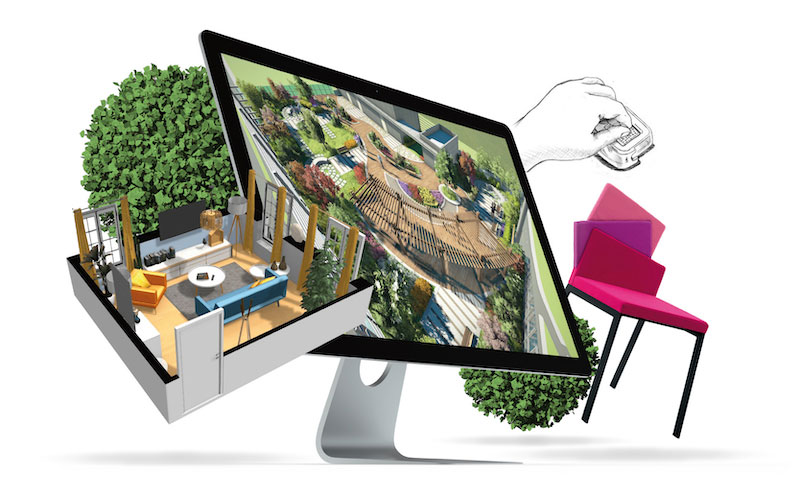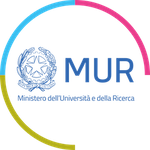Design
PRODUCT – INTERIOR – GARDEN
Become a Designer, learn to design products,
indoor and outdoor spaces, to create 3D models and prototypes.
The idea lies in your creativity.

DESCRIPTION
The Design course that issues the First Level Academic Diploma will make you competent in artistic methods and techniques and will make you acquire specific disciplinary and professional skills.
The aim is to provide knowledge as well as design and expressive methodologies for using the tools of representation and artistic practices, with particular regard to Interior Design, Product Design and Garden Design. The Designer conveys innovation from a creative, aesthetic, social and technological point of view.
The design culture must be transversal, covering both theoretical aspects and more specific technical skills. The goal is to make the Designer become a problem solver, making him able to understand and anticipate the needs of the market, mediate them with corporate intentions and translate them into a concrete and achievable project.
ACADEMIC DIPLOMA PROFILE

SKILLS
- Office suite
- Adobe Illustrator
- Adobe InDesign
- Adobe Photoshop
- Rhinoceros
- Asana
- Concept Board
- Blender
- Autocad
PROFESSIONAL FIGURES
- Light Designer
- Packaging Designer
- Car Designer
- Progettista 3D
- CAD Designer
- Eco Designer
PROGRAM
PROGRAM
1° YEAR
Technical and Project Design
The course aims to lay the foundations to learn technical drawing, both on the theoretical level and on the professional-practical one, through the knowledge of common elements of graphics, tools for technical drawing, graphic constructions, metric scales, basic elements of orthogonal projections, through the projection, rotation and section of solids, axonometric projections and techniques for architectural metric survey.
It will provide the elements that will support the design phase and therefore the conception and development of the product, which will be the result of the ideational moment.
Disegno Prospettico
Perspective is a graphic method suitable for representing the depth of space on a flat surface.
The course is therefore dedicated to the treatment of the central, accidental perspective as well as the definition of the shadows applied to the perspective.
Since this is a course linked to the School of Design, the topics will be oriented towards the perspective of interior environments and objects.
Computer Design
In-depth study of the AutoCAD software functions to take advantage of the potential offered by the program and learn commands that will make it possible to create two-dimensional (2D) projects and the conceptual bases for working with 3D functions.
History of Design
The course will deal in general with the history of design in relation to the history of interior design from the mid-19th century to the present day.
It will focus specifically on the concept of “object system” with respect to the domestic context by looking specifically at the relationship between the interior design and the design of household objects.
Design 1
The course will consist of a series of theoretical lessons, of classroom exercises and, on some occasions, of thematic discussions organized with the students. The lessons will address the fundamental themes of the subject: the internal-external relationship, the relationship between internal volume and its casing, the design of light (natural and artificial) and materials, furnishings, dimensions and the nature of living spaces.
Experimenting and planning will converge in the individual study that the student will have the task of doing on a completed work. The student will have to present an interior design project based on the theme indicated by the teacher, through a series of graphic-compositional drawings based on individual stylistic trends previously agreed with the teacher.
Ecodesign 1
In order to be competitive in today’s job market, the Designer must demonstrate that they have clear principles and tools to be environmentally sustainable.
In the first year, students will acquire the basic concepts of “eco” reasoning, and will be presented with the historical foundations that led design towards a sustainable perspective, as well as the materials and criteria for ecological technologies and practices. We will work using sustainable materials.
Urban Architecture
The course aims to let students acquire a good level of knowledge of the significant elements of Architecture and a sufficient cultural basis for Urban Planning.
In particular, the lessons will focus on Architecture as a language for the use of space, on Architecture and its urban implications, and on the culture of architectural space in the social and environmental context.
Interior Architecture
The Modern has radically reformulated the domestic landscape, aligning the house with the changes in industry and the ways of life determined by the dynamism of large cities.
The course, through a reflection on these changes in the space of the house from the second half of the nineteenth century to today, in the perspective of a history of domestic design, returns to the notion of a furnished interior its organic integration with the layout of the spaces and the design of the architectural volumes.
Design System
The system design methodology analyzes the “Museum and Exhibition Systems” and investigates the performance of contemporary exhibition spaces as a system of collective use of products and services.
We operate with a Complexity management logic in the more general area of Hospitality Design for the use of products-services for exhibition events related to urban space and more properly circumscribed specialized spaces.
Project Culture
The purpose of the course is to offer the student some orientation tools on the project. Four buildings will be taken into consideration, which, although located in different historical periods, in addition to representing the highest expression of the culture of their time, are closely related to each other.
Through an in-depth analysis of the works, an attempt is made to clarify the complex path of design in the evolution of human thought from classical antiquity to today.
Fundamentals of Computer Science
The aim is to respond adequately to the challenge launched by the job market, not only through knowledge and deepening of cultural and technical areas, but also through the “tools” to use to carry out the process.
To master an adequate tool is an indispensable condition for achieving a valid and productive goal for our work needs.
PROGRAM
2° YEAR
Modeling
The course provides for the identification and knowledge of theoretical / practical themes and methodologies on the design and construction of models. The goal is to give students the cognitive tools to be competent in the methods and techniques of representation and the knowledge of design and expressive methodologies, starting from the study of sketches and executive technical drawings.The model is the three-dimensional realization of the design and is intended to present the idea. It becomes an indispensable tool to check the final result.
History of Architecture
The course will focus on historical knowledge and on the analysis of the forms and contents (also symbolic) of the different architectural languages, through the use of a reference manual, specific monographs, as well as through the reading of the numerous theoretical “manifestos” produced in the course of the twentieth century by individual architects and groups and movements (more frequent in particular during the years of the avant-garde and utopias of the sixties and seventies).The lessons will be structured by alternating the reading and commenting of texts with the analysis of the works through audiovisual aids (slides and films), insisting in particular on reading architecture in close relationship with other cultural manifestations (literature, philosophy, art). The aim of the course is to provide an in-depth knowledge of the changes that have taken place in the concept of architectural space starting from the tear made by the architectural avant-gardes (Futurism, Expressionism, Constructivism and New Objectivity) at the beginning of the twentieth century up to the most recent trends of recent decades.
Design Methodology
Starting from the study of well-known projects like exhibition set-ups, trade fair stands and set-ups of outdoor spaces through the deconstruction of creative processes, we want to develop a design methodology applicable to any creative process.
The acquisition of this understanding and the consequent development of critical tools, with respect to the perceptual phenomena that are the basis of any cognitive development, will allow you to acquire the knowledge and develop a creative production starting from observation and through the scientific method.
Material Typology
The course aims to train students in the knowledge and choice of materials, from the more traditional ones such as woods, marbles, stones, etc., to the more innovative ones such as resins, recomposed materials.Meetings and visits with qualified representatives of companies in the various sectors concerned will give students the opportunity to get acquainted with the materials in an in-depth and specific manner, also for the purpose of their correct choice and application.
Design 2
In ancient times, gardens were practical manifestations; in the cultures of the ancient East, Egypt and Mesopotamia, the garden is represented by a delimited area in which there is a particularly luxuriant vegetation of ornamental plants, surrounded by an external environment.
It is important to highlight that the garden, and especially the plants and flowers, were associated with female figures. A symbolic element very present in ancient times was, in fact, the tree, seen as an element of life: and the female figure, in many religions, is identified precisely as a lifeblood.
The aim is to form a landscape design that knows how to understand and analyze the main characters of a GREEN space both at a public and private level, in all its natural and anthropic components, by means of specific analysis and acquisition of tools of design techniques.
Virtual Architecture
The purpose of the course is to offer the skills to design Virtual environments using Twinmotion and Quixel Mixer software. The student will learn how to create photorealistic immersive environments thanks to the application of special PBR (Phisically Based Rendering) materials. You will be able to produce final drawings in the form of innovative renderings or 360-degree films or even interactive three-dimensional scenes in real time.
Aesthetics of visual arts
The course aims to introduce the ways in which the concept of “Aesthetics” is articulated in disciplines such as history of art, favoring its theoretical aspects focused on the problem of knowledge of internal and external realities, through the relationship between analytic and imaginary reason, in a condition of continuous exchange.
Decoration
Thanks to this educational path, the student will be able to experiment with different decoration techniques, acquiring the ability to use these tools in the communication of future work project.
Ecodesign 2
Having acquired the basic tools, the student will undertake a design path to follow the different phases of Ecodesign. They will study the criteria for recognizing the characteristics of innovative materials and understanding in which case it is possible to use them. They will analyze some products on the market, their ethnography, packaging, optimization during use, and study the best techniques for a “design for disassembling”. They will also address the environmental communication of the product.
English
The goal of this course is to help students to increase their language skills up to an intermediate level – B1 according to the Common European Framework of Reference for Languages (CEFR) – through a gradual path.
PROGRAM
3° YEAR
History of art and costume
The course will make students acquire the ability to read works of art, to recognize the various styles and their aesthetic and technical differences and to understand the links between different technologies and the influences of political and socio-economic systems in the development of cultural and artistic expressions. They will start from the analysis of the main themes of the Neo-avant-gardes and work their way up to the concepts and protagonists of the latest trends in contemporary art, from the Informal to the Neo-object.
Design 3
The course aims to convey tools and methods for managing the design process that leads to the creation of an industrial product. A conscious design passes through the interaction of functional, formal, semantic aspects, and the knowledge of the reference context, that is, of the complexity of social and cultural relations, of economic and consumption dynamics, and of technological development. The definition of the multidisciplinary skills operating in the “design system”, the knowledge of parameters and constraints relating to the various areas of intervention, and the acquisition of skills relating to materials and technologies are the necessary basis for the development of an interdisciplinary and integrated methodology.
3D Modeling
The course will give students knowledge and in-depth study of commands and techniques for the visualization and spatial verification of each design idea and the production of basic three-dimensional drawings directly from the model. The possibility of applying the modeling technique ranges from mechanics, to design, to architectural drawing.
Digital photography
The course highlights the importance of photographic language as a tool for communication, expression and research both on a theoretical and a practical level.
It provides the necessary teachings in order to develop and understand the importance of composition, to know the techniques of indoor and outdoor shooting, the treatment of sensitive material both in analogue and digital, the technology of the camera, the choice of equipment, the ‘exposure and measurement of light, the language of optics, landscape photography and professional studio photography, developing a specific knowledge of the photographic language.
Ecodesign 3
We will talk about urban and architectural regeneration that is possible through the principles of environmental sustainability applied to design. Students will design an original product that will follow all the Ecodesign criteria: the student will be able to face the process that leads to ecological quality in its entirety, and will get the tools to perform environmental assessments with related industry charts.
Internship
Students will be able to carry out an internship at a company or a professional studio in order to follow the development of a project from its conception to its realization, collaborating with professionals in the sector and practicing what they have studied.
Thesis
Each student will have to carry out a personal research work, through a written paper or a project, that will be discussed at the time of graduation.

First Level Academic Diploma authorized by MUR (Ministry of Education, University and Research)
with Ministerial Decree prot. No. 626 of 18 July 2013.
FILL OUT THE FORM
to receive more information.
We will contact you within a few hours.
